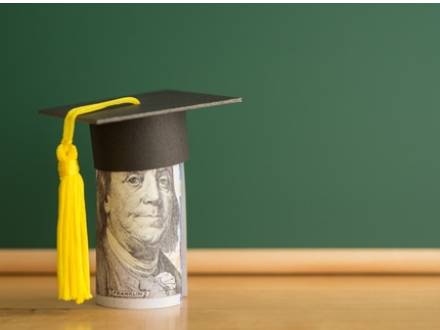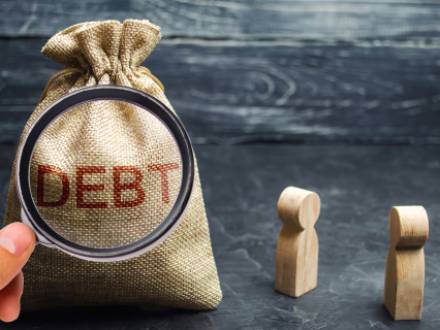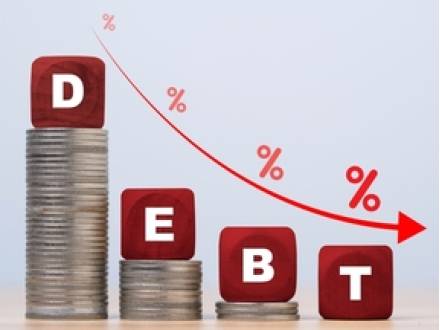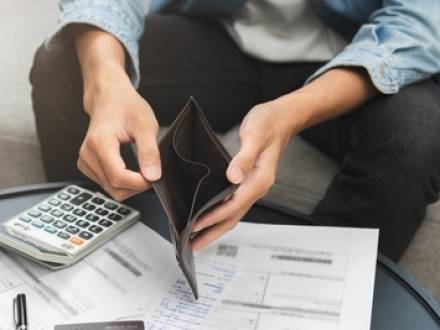Recent Blog Posts
Bankruptcy and Major Life Changes: What to Know if You're Pregnant, Newly Married, or Starting a Family
 Life rarely follows a perfect script. One minute, you are planning a wedding, preparing for your first child, or getting used to the rhythms of married life. The next, you are staring at credit card statements, medical bills, or student loans you cannot keep up with. For many people across Texas, these life milestones come with deep joy but also financial pressure. If you are considering filing for bankruptcy during one of these major transitions, you are not alone and you are not out of options.
Life rarely follows a perfect script. One minute, you are planning a wedding, preparing for your first child, or getting used to the rhythms of married life. The next, you are staring at credit card statements, medical bills, or student loans you cannot keep up with. For many people across Texas, these life milestones come with deep joy but also financial pressure. If you are considering filing for bankruptcy during one of these major transitions, you are not alone and you are not out of options.
An experienced Schertz, TX bankruptcy attorney can help you understand whether bankruptcy is the right step for you and what kind of protection it offers during vulnerable times like pregnancy, early parenthood, or newly married life.
Can You File for Bankruptcy While Pregnant or After Having a Baby?
You can file for bankruptcy while pregnant or after giving birth. There are no restrictions based on pregnancy or parenthood. In fact, many people choose to file during this time because of growing medical debt, reduced income, or the need to prioritize expenses for their baby.
How Long Does Chapter 7 Bankruptcy Take?
 Filing for Chapter 7 bankruptcy can offer powerful financial relief if you are overwhelmed by debt. It allows eligible individuals to eliminate most unsecured debts, such as credit card balances and medical bills, and get a fresh start. But many people considering bankruptcy want to know one important thing up front: how long does it take? As they say, when you know you want to start the rest of your (financial) life, you want to start it as soon as possible. Indeed, the prospect of a lengthy court process can be intimidating, particularly because bankruptcy is an unknown entity for many.
Filing for Chapter 7 bankruptcy can offer powerful financial relief if you are overwhelmed by debt. It allows eligible individuals to eliminate most unsecured debts, such as credit card balances and medical bills, and get a fresh start. But many people considering bankruptcy want to know one important thing up front: how long does it take? As they say, when you know you want to start the rest of your (financial) life, you want to start it as soon as possible. Indeed, the prospect of a lengthy court process can be intimidating, particularly because bankruptcy is an unknown entity for many.
The good news is that Chapter 7 bankruptcy is typically the fastest type of bankruptcy, and in most cases it lasts just a few short months. Nevertheless, the exact timeline can vary based on several factors, including the details of your case, the efficiency of your local bankruptcy court, and how quickly you submit the required information. An experienced San Antonio, TX Chapter 7 bankruptcy attorney can help you understand the likely length of your bankruptcy case.
Can People Find Out I Filed for Bankruptcy?
 Deciding to file for bankruptcy can be a smart financial decision, a chance for you to discharge much of your debt and receive a financial fresh start. At the same time, there is undeniably a stigma associated with filing for bankruptcy, even though many people who are struggling with overwhelming debt take advantage of this legal process. In fact, in 2024 over 500,000 bankruptcy cases were filed in the United States.
Deciding to file for bankruptcy can be a smart financial decision, a chance for you to discharge much of your debt and receive a financial fresh start. At the same time, there is undeniably a stigma associated with filing for bankruptcy, even though many people who are struggling with overwhelming debt take advantage of this legal process. In fact, in 2024 over 500,000 bankruptcy cases were filed in the United States.
Nevertheless, you may be worried about how friends and employers will perceive you if you file for bankruptcy, or whether it will impact your reputation. You may naturally be wondering whether people can find out that you filed for bankruptcy.
While bankruptcy is ultimately part of the public record and it is possible for people to find your bankruptcy filing, most people will generally not automatically find out you filed for bankruptcy. Nor will they be able to access your bankruptcy records with the ease of running a simple internet search. An experienced Kerrville, TX bankruptcy attorney can advise you on the ramifications of your bankruptcy filing.
The Surprising Benefits: Chapter 13 Potentially Discharges Divorce Property Settlement Debts
 Unlike Chapter 7, which cannot discharge divorce-related property settlement debts, Chapter 13 bankruptcy may allow you to eliminate some or all of your non-support divorce obligations. For many people struggling with debt after a divorce, this can be an appealing option.
Unlike Chapter 7, which cannot discharge divorce-related property settlement debts, Chapter 13 bankruptcy may allow you to eliminate some or all of your non-support divorce obligations. For many people struggling with debt after a divorce, this can be an appealing option.
However, the benefits of Chapter 13 come with certain risks and trade-offs that should be carefully considered. Simply owing money to your former spouse does not automatically mean Chapter 13 is your best path. Below, we explain how divorce-related debts are treated in bankruptcy, what Chapter 13 bankruptcy can and cannot do, and why you should speak to a qualified attorney if post-divorce debt is making it hard to move forward.
If your divorce decree or separation agreement left you with financial obligations — other than spousal or child support — that you cannot manage, there may be legal ways to seek relief. An experienced Boerne, TX Chapter 13 bankruptcy attorney can help you understand whether using Chapter 13 to address those debts is the right decision for your circumstances.
Good Timing Can Shorten Your Chapter 13 Case by 2 Years
 Chapter 7 bankruptcy is the most popular form of bankruptcy for a few reasons, but perhaps most notably because it takes a significantly shorter amount of time to finalize. Despite Chapter 7’s many benefits, sometimes, after consulting with your attorney, you might conclude that Chapter 13 bankruptcy is the right option for you. However, Chapter 13 bankruptcy takes much longer than Chapter 7: it requires you to spend three to five years repaying your debts through a payment plan, instead of being able to "discharge", or write off, all or most of your debts within about four months as is the case in Chapter 7.
Chapter 7 bankruptcy is the most popular form of bankruptcy for a few reasons, but perhaps most notably because it takes a significantly shorter amount of time to finalize. Despite Chapter 7’s many benefits, sometimes, after consulting with your attorney, you might conclude that Chapter 13 bankruptcy is the right option for you. However, Chapter 13 bankruptcy takes much longer than Chapter 7: it requires you to spend three to five years repaying your debts through a payment plan, instead of being able to "discharge", or write off, all or most of your debts within about four months as is the case in Chapter 7.
Nevertheless, it is possible to reduce the time you spend in Chapter 13. In fact, utilizing your income level and wise timing in your filing of a Chapter 13 "adjustment of debts" case could shorten your payment plan from five years to three. An experienced San Antonio, TX Chapter 13 bankruptcy attorney can advise you on ways to shorten the length of your Chapter 13 payment plan.
Adversary Proceedings in Bankruptcy
 Sometimes issues or disputes arise in bankruptcy that cannot be resolved through the bankruptcy process itself. These disputes, which require a judge's input, may be resolved through an adversary proceeding. This separate lawsuit within the bankruptcy case is a way for interested parties in the bankruptcy to challenge certain actions with which they disagree. For example, a debtor can file an adversary proceeding to object to a creditor’s violations of the automatic stay halting debt collection efforts. A trustee can bring claims against a debtor objecting to fraudulent transfers of assets, or the trustee may object to the dischargeability of a debt. Creditors can also file an adversary proceeding to object to the discharge of a debt, and for other reasons, as we will discuss below. An experienced Kerrville, TX bankruptcy attorney can represent you in an adversary proceeding in bankruptcy.
Sometimes issues or disputes arise in bankruptcy that cannot be resolved through the bankruptcy process itself. These disputes, which require a judge's input, may be resolved through an adversary proceeding. This separate lawsuit within the bankruptcy case is a way for interested parties in the bankruptcy to challenge certain actions with which they disagree. For example, a debtor can file an adversary proceeding to object to a creditor’s violations of the automatic stay halting debt collection efforts. A trustee can bring claims against a debtor objecting to fraudulent transfers of assets, or the trustee may object to the dischargeability of a debt. Creditors can also file an adversary proceeding to object to the discharge of a debt, and for other reasons, as we will discuss below. An experienced Kerrville, TX bankruptcy attorney can represent you in an adversary proceeding in bankruptcy.
Secured Debt Treated Like Unsecured Debt after Collateral Surrender
 One of the most painful and stressful things about bankruptcy is having to surrender your assets. Whether they include real estate, a vehicle, or other secured debts, surrendering assets to creditors can be difficult emotionally and practically. But what if surrendering collateral could be a positive thing in bankruptcy? In some instances, surrendering collateral rather than keeping the asset can actually be beneficial and may make more sense than you might initially think, as it can help you afford payments on other important assets and give you a chance to discharge that debt. That is true because when you surrender your collateral, your secured debt is treated as unsecured debt–and that makes a big difference in bankruptcy. An experienced Boerne, TX bankruptcy attorney can advise you on whether surrendering collateral to turn secured debt into unsecured debt makes sense in your case.
One of the most painful and stressful things about bankruptcy is having to surrender your assets. Whether they include real estate, a vehicle, or other secured debts, surrendering assets to creditors can be difficult emotionally and practically. But what if surrendering collateral could be a positive thing in bankruptcy? In some instances, surrendering collateral rather than keeping the asset can actually be beneficial and may make more sense than you might initially think, as it can help you afford payments on other important assets and give you a chance to discharge that debt. That is true because when you surrender your collateral, your secured debt is treated as unsecured debt–and that makes a big difference in bankruptcy. An experienced Boerne, TX bankruptcy attorney can advise you on whether surrendering collateral to turn secured debt into unsecured debt makes sense in your case.
Your Voluntary Dismissal of a Chapter 13 Case
 Suppose you filed for Chapter 13 bankruptcy and have regrets. Can you simply end it? Well, according to the Bankruptcy Code, yes you can. It explicitly states that the court will dismiss a Chapter 13 case at the request of the person who filed it, and you can do so at any point during the Chapter 13 process. If you filed a Chapter 13 bankruptcy and think you may want to voluntarily request a dismissal, you could likely benefit from speaking with a San Antonio, TX bankruptcy attorney with extensive experience practicing bankruptcy law.
Suppose you filed for Chapter 13 bankruptcy and have regrets. Can you simply end it? Well, according to the Bankruptcy Code, yes you can. It explicitly states that the court will dismiss a Chapter 13 case at the request of the person who filed it, and you can do so at any point during the Chapter 13 process. If you filed a Chapter 13 bankruptcy and think you may want to voluntarily request a dismissal, you could likely benefit from speaking with a San Antonio, TX bankruptcy attorney with extensive experience practicing bankruptcy law.
Where Does the Bankruptcy Code Say That You Can Dismiss a Chapter 13 Case?
Section 1307(b) of the Bankruptcy Code, which addresses the conversion or dismissal of bankruptcy, clearly states, "on request of the debtor at any time…the [bankruptcy] court shall dismiss a case under this chapter." It is important to highlight the two distinctive elements within this statement.
Can Bankruptcy Help You Avoid Foreclosure in Texas?
 Facing home foreclosure can be emotionally and financially devastating. If you have fallen behind on your mortgage payments, you may be wondering whether filing for bankruptcy will stop the foreclosure process and let you keep your home. This is a complicated question and the answer depends on the facts of your case and the type of bankruptcy you file. A Kerrville, TX bankruptcy lawyer could likely suggest ways to keep you in your home, depending on your specific circumstances.
Facing home foreclosure can be emotionally and financially devastating. If you have fallen behind on your mortgage payments, you may be wondering whether filing for bankruptcy will stop the foreclosure process and let you keep your home. This is a complicated question and the answer depends on the facts of your case and the type of bankruptcy you file. A Kerrville, TX bankruptcy lawyer could likely suggest ways to keep you in your home, depending on your specific circumstances.
Does Bankruptcy Stop Foreclosure in Texas?
When you file for bankruptcy, the "automatic stay" comes into effect. It temporarily prevents your creditors from taking any action on your debts, including from foreclosing on your home. However, this relief only lasts for the duration of the bankruptcy case, which is usually three to six months for Chapter 7 and three to five years for Chapter 13. However, bankruptcy does not eliminate the mortgage–meaning that the lender could foreclose on the home once the automatic stay is lifted if payments are not current. While in Chapter 13 this might not be an issue as you would likely repay your mortgage through the payment plan, in Chapter 7 that is not the case, meaning that a Chapter 7 bankruptcy does not fully stop foreclosure.
Chapter 7 Buys Very Short Amount of Time to Get Vehicle Insurance
 When most people consider Chapter 7 bankruptcy, they usually think about it as a tool to clear overwhelming debt and restart their financial lives. That is certainly accurate, but Chapter 7 also offers other surprising benefits. One lesser-known way that Chapter 7 can help those in financial distress is as a way to buy the bankruptcy filer time to reinstate lapsed vehicle insurance. This is thanks to the automatic stay and its ability to block creditors from repossessing a vehicle — which they can do when the vehicle’s insurance has lapsed. Although this benefit almost always has a short time frame, it can help. An experienced Texas Chapter 7 bankruptcy attorney can provide advice on the benefits of Chapter 7 bankruptcy.
When most people consider Chapter 7 bankruptcy, they usually think about it as a tool to clear overwhelming debt and restart their financial lives. That is certainly accurate, but Chapter 7 also offers other surprising benefits. One lesser-known way that Chapter 7 can help those in financial distress is as a way to buy the bankruptcy filer time to reinstate lapsed vehicle insurance. This is thanks to the automatic stay and its ability to block creditors from repossessing a vehicle — which they can do when the vehicle’s insurance has lapsed. Although this benefit almost always has a short time frame, it can help. An experienced Texas Chapter 7 bankruptcy attorney can provide advice on the benefits of Chapter 7 bankruptcy.
Are You Required to Have Car Insurance?
Almost every state requires vehicle owners to have at least a certain dollar amount of liability insurance coverage. Several states also require personal injury protection (PIP) insurance covering medical expenses from an accident for you, household members, and your passengers, regardless of fault. Still other states require uninsured and underinsured motorist coverage covering you when you are harmed by someone with no insurance or insufficient insurance.






